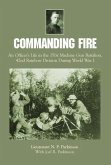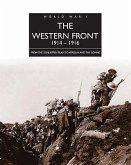Many people have the idea that the 'Great War' on the Western Front was simple, if ghastly, to fight - with few tactics, and unbroken, monotonous, trench lines as the main feature of the battlefield. In such a scenario the archetypal image of battle is of soldiers with rifles and bayonets charging each other in blind obedience to stupid repetitious orders. Though undeniably bloody the war was in fact a ferment of new ideas and new weapons. Gas, flame throwers, super-heavy artillery, concrete bunkers, tanks, aircraft and other innovations were all introduced, whilst older notions such as barbed wire, machine guns and armour took on a new lease of life. No single manual was ever enough to encompass 'modern war', and even before 1914 numerous publications were required. With the focus on the Western Front and the soldiers fighting there, this unique compendium collects together a huge variety of contemporary manuals, leaflets and booklets, and shows how although operations often failed, British commanders made attempts to devise new tactics and weaponry.








